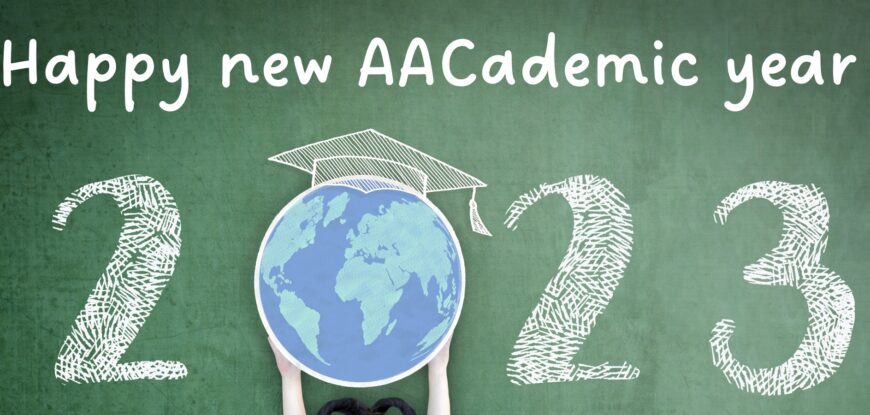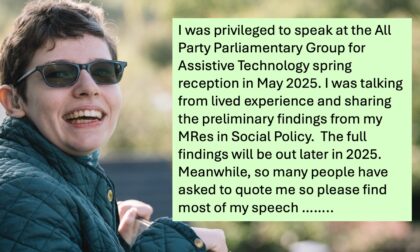September in England marks the return to school, colleges and higher educational establishments for a new academic year. It might feel daunting to have an AAC user in your sessions. Here are my 9 top tips around access and communication that may support a Happy AACademic New Year when you have an AAC user in your class/group.
Imagine your head is full of ideas, you know the answers in class, you have questions you want to ask, yet you are unable to speak. Or, if you can speak your speech is unintelligible to those around you.
Tip #1
Inclusion is not being sat at the back in the corner by the door, arriving late or leaving early. Diversity means being invited to the party, inclusion means being able to dance AND when appropriate choosing the music. Good inclusion is an attitude, ask the AAC user, the team around them and yourself: What if? How can we? Why not?
Tip #2
Everyone is an individual: Get to know your students on a 1-1 basis at the beginning of the AACademic new year. Ask them what they need, when they get seen by you they thrive. Your input makes a difference, it’s your job, but it’s their foundations for life, make it fun. Be familiar with their individual support plan and champion their access to the curriculum. Have work available before every class, and for all homework, that has been made accessible and recognises the reasonable adjustments needed for success.
Tip #3
Reflect on your own expectations and avoid ableism. There is nothing worse for any student than never having the satisfaction of completing work. Understand the learning objectives and decide if alternative strategies such as a bullet-pointed list will achieve the same outcome as a neatly written essay. If reading aloud in class is an objective, can they pre-programme it beforehand?
Tip #4
Presume competence, and have high expectations of, and for, every student. Don’t be surprised when an AAC user demonstrates competence. Like most people they will also have hidden talents such as listening skills, observational skills and empathy. AAC users have probably spent more time watching and hearing what’s going on around them than others and understand nuance better than most.
Tip #5
Be patient and give an AAC user time, using AAC is a cognitive and physical activity. It may take time to process a question, decide how to answer and then to motor plan how to make your communication device work. Programming is not easy and takes time too. An on-the-spot question can create brain freeze, but giving a student time to plan a well thought out and quality answer makes the process easier for everyone.
Tip #6
Literacy is the key to good communication. An AAC user’s journey may not follow the ‘standard’ path. Always assume they can, and with the right support, will achieve. It might take longer, or they may need to demonstrate it in a different way but everything is possible.
Tip #7
Good communication works for all students. An AAC user needs access to their resources at all times, with the necessary vocabulary for the lesson (and outside of class). Remember, all communication is multimodal; we all use our voice, body language, facial expression and our eyes to convey messages.
Tip #8
Remove physical barriers to inclusion by making sure the student and their AAC resources are placed so you can see them and they can see the action in class, be included with peers, and enjoy your class.
Tip #9
Often AAC users have an academic assistant (teaching assistant, special needs assistant) who play an important part in ensuring access to the curriculum and educational activities for the start of the AACademic new year. They will be an invaluable support but avoid relying on them to replace good communication between you and a student.
Breathe, smile and relax. Wishing you a very enjoyable AACademic New Year!
Find out more about AAC and more about AAC in education





If you found this interesting or
helpful please feel free to share.